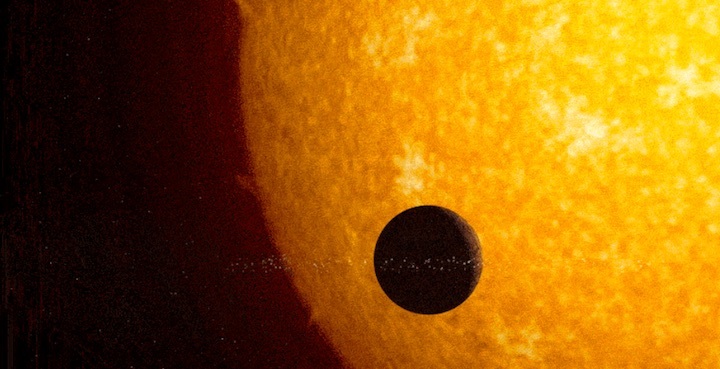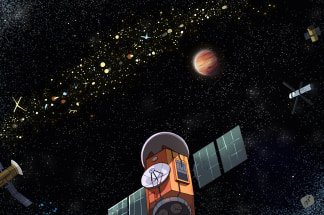21.03.2018
The approach requires no new telescopes nor even any new experiments.

It’s another scheme for finding the Romulans or the Borg — and it definitely has some advantages.
The usual approach to looking for alien societies is to scan the skies for signals like radio transmissions or bright, flashing lasers. Either would tell us that someone’s out there.
Lamentably, these schemes have a troublesome drawback: the need for synchronicity between the sender (aliens) and the receiver (us). What are the chances that, when our attention is directed to a particular planetary system, their transmitters are aimed our way? It’s like two pairs of eyes meeting across a crowded casino. It might not happen.
That’s why a detection scheme that doesn't depend on synchronicity — like the one proposed in a new paper published in The Astrophysical Journal — has such great appeal. The idea is to hunt for evidence that’s always around — artifacts that might even outlast the extraterrestrials themselves, in the same way that fossilized bones reveal the long-gone dinosaurs. We’ve never seen a T. rex, nor heard its roar. But we have no doubt that they once stomped across the landscape.
Maybe we could sniff out our bumpy-headed brethren by examining the atmosphere around their home planet. For example, we might use instruments to look for the presence of chlorofluorocarbons — the woeful result of too much Klingon hairspray.
Sadly, detecting this gas from light-years away is beyond the capabilities of even the biggest telescopes. But there’s another kind of artifact that might be possible to find. Spanish astronomer Hector Socas-Navarro argues in the paper that we might look for artificial satellites around distant planets. After all, satellites are something you might expect any respectable alien society to have.
For us earthlings, satellites serve a multitude of functions, including spying on our enemies, enabling GPS, and furnishing the endlessly fascinating imagery you can peruse on Google Earth.
But one subclass of the 3,000 or so satellites swarming around Earth is particularly useful: the 400 that pirouette around the planet at roughly 22,000 miles above the equator. At that altitude, these so-called geostationary satellites complete one orbit every 24 hours, the same rate at which the Earth spins. Consequently, they appear fixed in the sky. That makes them especially handy for photographing the weather, relaying international phone calls, and beaming down satellite TV.
Now suppose there are aliens out there who are substantially more advanced than we are. Their planet might be orbited by billions or trillions of geostationary satellites instead of our measly 400. And astronomers might be able to detect this orbiting thicket of space hardware when the planet comes between us and its host star — what astronomers call a transit.

If this were to happen, the dimming of starlight caused by the planetwould be preceded and then followed by a very slight dimming by its satellite necklace. This would be especially pronounced if we saw the necklace edge-on, which would block out more starlight and thus be more noticeable.
The beauty of this scheme is manifold. To begin with, there’s no synchronicity problem, so the aliens don’t need to make any effort to get in touch. Even if they managed to blow themselves to smithereens millions of years ago, their satellites might still be around to mark their collective grave.
In addition, this approach requires no new telescopes nor even any new experiments. Astronomers would only need to do a careful check of data that’s already been collected in the search for exoplanets.
Despite what you see on TV and in movies, we’re unlikely to meet aliens anytime soon. In fact, we’re not even sure aliens are out there. But Socas-Navarro’s idea of looking for massive satellite swarms is a clever one. Its chances for success may not be great, but it’s easy to try. And there’s no winning this game without playing.
Dr. Seth Shostak is the senior astronomer at the SETI Institute in Mountain View, California and a noted expert on the search for extraterrestrial intelligence.
Quelle: Mach
